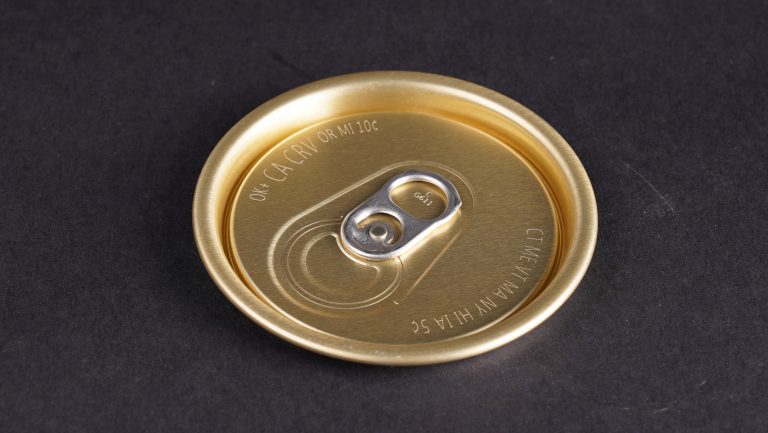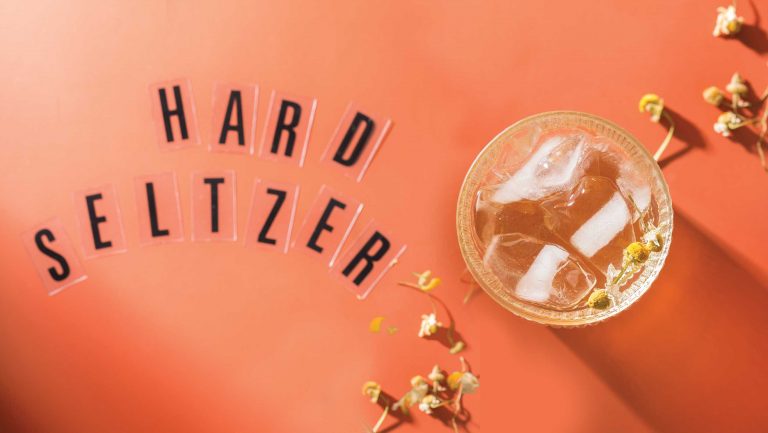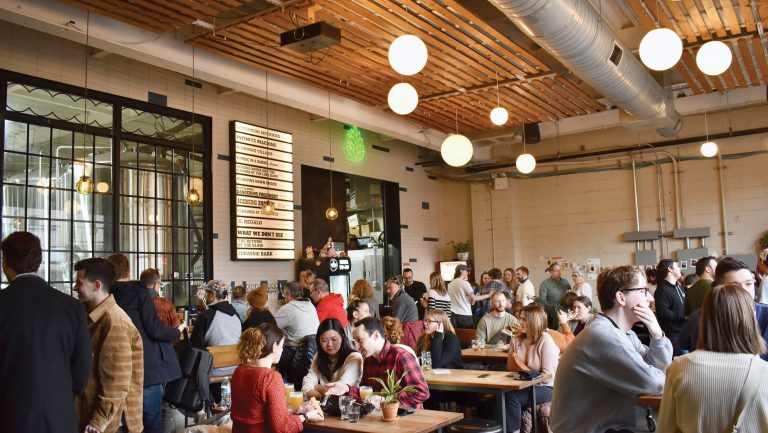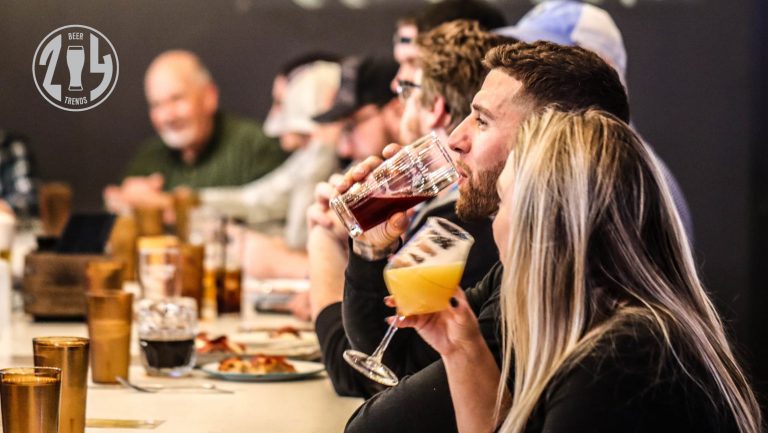Wild East Brewing Co. started brewing beer in Brooklyn in late December 2019. It distributed a small amount of beer to local shops through February while working toward opening a taproom in the late spring. And then New York City shut down.
The new brewery was stuck with kegs of fresh beer and no taproom for people to drink it in. So Wild East pivoted almost entirely to Crowler sales. By filling 32-ounce Crowler cans by a draft line and sealing them with a Crowler machine on-site, the brewery was able to open to the public despite the inability to serve on-premise. In those first weeks of business in March, Wild East was selling as many as 250 Crowler cans a weekend.
“It was quite a rollercoaster when we first started,” reports Tyler March, co-founder and head of operations at Wild East. “People were coming in nonstop, hoarding beer because no one knew what the future looked like.”

Don’t miss the latest drinks industry news and insights. Sign up for our award-winning newsletters and get insider intel, resources, and trends delivered to your inbox every week.
Wild East is one of many brewers that turned to Crowler brand cans when nationwide shutdowns occurred. According to Google Trends data, searches for “Crowler” shot up the week of March 15 and reached an all-time high in April. Sales at Crowler Nation, which sells Crowler equipment and is a middleman between Ball Corporation and breweries for the cans, mirrored that spike, says Jeremy Rudolf, who runs Crowler Nation and was instrumental in creating the Crowler concept around 2012 when he was the packaging manager at Oskar Blues Brewery.
“March 16 was ‘Crowler cans became toilet paper day,’” Rudolf says. “That’s when the mad rush happened, and we had about 37 times the normal order volume that day.”
According to Rudolf, by late May, sales had leveled out to about seven times the average amount, and Crowler Nation is selling about one sealer machine a day compared to the average of one every two to three days pre-pandemic.
Crowler machines have been a lifeline for some businesses.
“Crowler cans were always in our business plan, but they weren’t as big a part of our business plan,” March says. “I’d say it might have been 10 percent of our projected revenue, and now because of distribution and taproom [restrictions], it was near 100 percent.”
Now that the Crowler has rapidly gained more mainstream consumer recognition, it offers tremendous future growth potential for breweries, bars, and direct-to-consumer retail shops (in states where to-go draft beer is legal) well beyond shutdown.
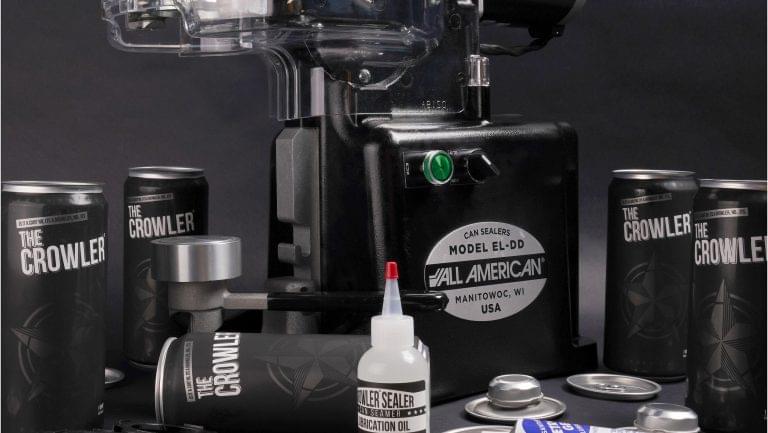
Why Breweries and Consumers Love the Format
The term “Crowler” is a registered trademark of the Ball canning company. Ball makes the entirety of the Crowler can supply and fulfills large orders to Crowler Nation, which distributes the cans in smaller quantities to breweries and retail shops across the country. Crowler Nation also sells the can-sealing machines.
The process is simple. First, a 32-ounce can without a lid is labeled and filled with draft beer. Then a sealer machine, which costs $3,943 for the basic version (or $5,943 for one with additional safety ratings), secures a pop-top to the body of the can. Any spillage is wiped off, and it’s ready for the customer to drink by the fresh date written on the label by the business that fills it, which is usually around a week after purchase.
Getting started is as easy as ordering a starter kit that costs a few hundred dollars more than the standard price and includes the sealer machine, cans, lids, and carriers.
“In a week from when you order, you can pay off the machine” with about a thousand can sales, Rudolf says.
The draw for the consumer is that cans are lighter than glass growlers. They’re also recyclable and can go places glass can’t. SanTan Brewing Company in Chandler, Arizona, was one of the first breweries in the nation to adopt the format in the mid-2010s, and consumer interest in Crowler cans, which the brewery calls Canzillas, was immediate.
“About 5 to 7 percent of customers purchase Canzillas regularly, with that number spiking to almost 15 percent during peak outdoor weather months,” says Anthony Canecchia, founder and brewmaster at SanTan. “Canzillas have a wide appeal to all of our customers, but we have found that it’s really a younger demographic who is drawn to them. They like the convenience and the ability to easily dispose of and recycle the cans.”

As is the case with other breweries, SanTan’s Crowler sales increased during the nationwide shutdown as it completed sales through third-party delivery, online ordering, and curbside pickup. Canecchia adds that Crowler sales are still slightly above average for this time of year despite slowing some after dine-in service opened again.
Rudolf has heard success stories like this first-hand from people placing orders. During one call, Rudolf says, a brewer told him that Crowler sales were “the best thing that’s ever happened to us during the worst thing that’s ever happened to us.”
As demand far outpaced supply, Ball and Crowler Nation introduced the Twistee can, a 16- ounce can with a twist-on top, which eliminates the need for a sealer. Wild East’s March says that having Twistees in the lineup fits the brand better than the plastic sippy cups that some bars and restaurants in New York City have turned to for newly legal to-go drinks.
Retailers Capitalize on the Crowler Trend
In the past, Crowler sales have largely focused on breweries because of the state-by-state patchwork of laws that regulate to-go draft beer sales. Rudolf says that only about 20 to 30 percent of Crowler sales were to businesses other than breweries. Yet during the recent mandatory shutdowns, many states, including California and Colorado, relaxed laws to allow retail shops to sell growlers and Crowler cans.
Shangy’s, in Emmaus, Pennsylvania, has seen first-hand how Crowler sales can help retail. The off-premise-only shop has thousands of beer options, including 40 taps for Crowler and growler fills. Owner Nima Hadian says Shangy’s sells about 2,500 Crowler cans a month. Shangy’s sealing machine can seal a range of sizes, but Hadian says the 32-ounce Crowler outsells any other size they fill 10 to one.
Crowler Nation’s Rudolf reports a huge boom in retailer demand for Crowlers, and he believes this customer base will soon eclipse breweries themselves. “A Walmart can potentially have a bar,” Rudolf says. “Think of Buffalo Wild Wings. You think of how many stores each of these large chains have, as well as the mom-and-pop stores around the country.”
Crowler Cans’ Future Potential
In addition to the Twistee cans, Crowler Nation is continuing to evolve with new offerings on sizes, colors, and pre-decorated cans. March sees Crowler sales of 32-ounce and 25-ounce cans continuing to be an integral part of Wild East’s plans. Canecchia of SanTan anticipates more permissive laws for alcohol delivery, which would increase delivery sales. Rudolf estimates that sales volume for Crowler Nation in 2021 will average around three-and-a-half times more than the pre-coronavirus volume.
“When they open up bars and restaurants, it’s not going to be normal again,” Hadian says. “It’s going to be a completely new look.” He adds that “you don’t need to leave your house anymore” for entertainment and good food. And if there’s a big increase in places filling Crowler cans, it’ll be easy enough to crack open a taste of freshly poured draft beer at home as well.

Dispatch
Sign up for our award-winning newsletter
Don’t miss the latest drinks industry news and insights—delivered to your inbox every week.
Nickolaus Hines is a journalist who writes about beer, spirits, food, and travel. He’s the food and drinks editor at Matador Network and has written about drinks for Liquor.com, Men’s Health, October, Hop Culture, Supercall, and VinePair.

